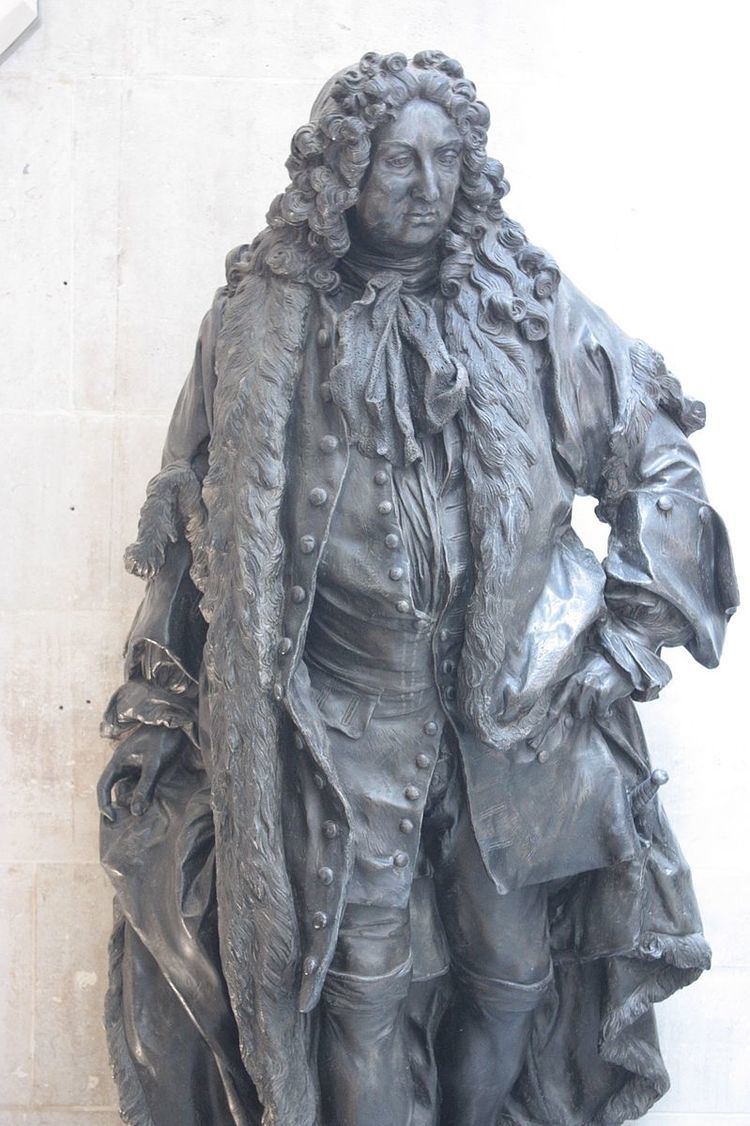Name John Cass | ||
 | ||
Died 1718, London Borough of Hackney, United Kingdom | ||
Classorama 2018 - Sir John Cass Red Coat School Band Two
Sir John Cass (February 1661 — 5 July 1718) was a merchant, politician and philanthropist. He was born in Rosemary Lane, in the City of London. He was the son of Thomas Cass, carpenter to the Royal Ordnance. In 1665, the family moved to Grove Street, in South Hackney to escape the plague.
Contents
- Classorama 2018 Sir John Cass Red Coat School Band Two
- john cass rscds book 49
- Career
- Philanthropy
- Sir John Casss Foundation
- Memorials
- References
john cass rscds book 49
Career
Cass became a merchant, builder and politician who served as Alderman, for the ward of Portsoken and in 1711 was elected Sheriff. He was elected as one of the Tory MPs for the City in 1710; until losing to the Whig faction in 1715. He was appointed a commissioner of the Commission for Building Fifty New Churches, in 1711; this was a scheme to provide new churches for the rapidly expanding population of the metropolis. He was knighted in 1713; and died in 1718 of a brain haemorrhage. He was buried in the churchyard of St Mary Matfelon, in Whitechapel; now the Altab Ali Park.
Cass was a master of the Carpenter's Company in 1713; but the following year transferred to the Skinner's Company, and became their master. Between 1709–1715 he was treasurer to the Bethlem Royal Hospital and the Bridewell,
He died on 5 July 1718, aged 57. His widow Elizabeth died on 7 July 1732.
Philanthropy
He was also a philanthropist who founded a school for fifty boys and forty girls in buildings in the churchyard of St Botolph's Aldgate in 1709. Cass had made a will at this time, but when his health failed in 1718, planned a new version taking account of the extra property he had acquired in the intervening years. Cass began a new will, but by the time of his death only three pages had been initialled. The will — worth £2000 — was contested by his heirs at law Court of Chancery. Lady Cass continued as patroness of the schools, but died in 1732. The school continued for a few more years under the aegis of Valentine Brewis, one of the trustees Cass had named, but was closed down after his death in 1738. In the early 1740s the remaining trustees petitioned Parliament for the permanent endowment of the school, and the will was finally upheld 30 years after Cass's death. This enabled the Sir John Cass's Foundation to be established in 1748.
Sir John Cass's Foundation
His charity continued to fund the Sir John Cass Foundation School as well as providing for the establishment of the Sir John Cass Technical Institute, which was founded in 1899 and moved into newly built premises at 31 Jewry Street, London, in 1902; becoming Sir John Cass College in 1950. In 1965, the College's Department of Fine and Applied art merged with the Department of Silversmithing and Allied Crafts from the Central School of Art to form the Sir John Cass School of Art, which moved into its own new premises at Central House, opposite the Whitechapel Art Gallery. The Sir John Cass College merged with the City of London College in 1970 to form the City of London Polytechnic; becoming London Guildhall University and merging to form the London Metropolitan University in 2002.
The modern Foundation provides support to a primary school within the City – near to St Botolph's; a secondary school (Sir John Cass Redcoat School) in the London Borough of Tower Hamlets; the Sir John Cass Faculty of Art, Architecture and Design within London Metropolitan University; and the Cass Business School within City University.
The Foundation has provided funding for the Sir John Cass School of Education at the University of East London campus in Stratford. Funding has also been provided for the Sir John Cass Hall, a hall of residence for students, in Well Street, London Borough of Hackney.
